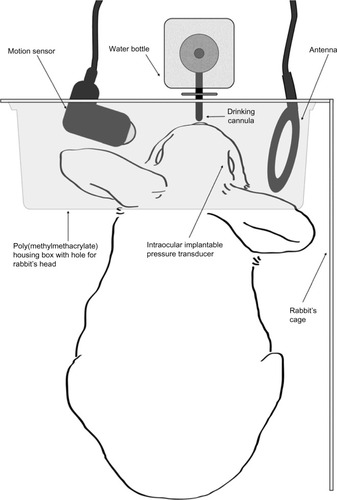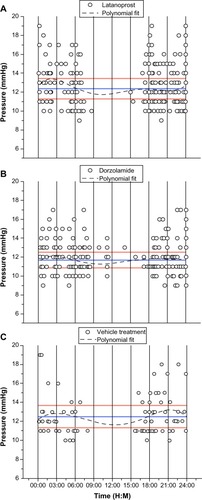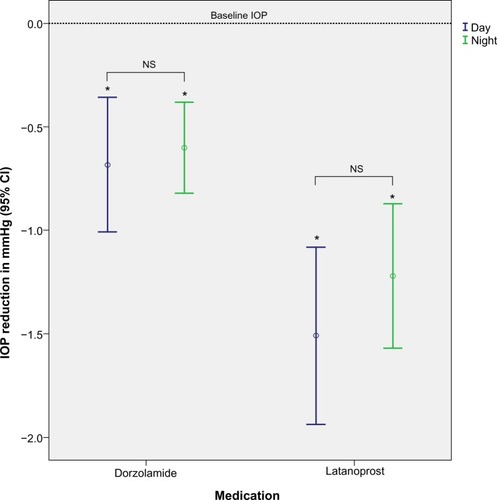Figures & data
Figure 1 Schematic diagram of the wireless IOP acquisition technique.
Abbreviation: IOP, intraocular pressure.

Figure 2 Circadian IOP variation with (A) latanoprost, (B) dorzolamide, and (C) vehicle administration.
Abbreviations: H, hours; IOP, intraocular pressure; M, minutes.

Figure 3 Diurnal and nocturnal IOP reduction with latanoprost and dorzolamide.
Abbreviations: IOP, intraocular pressure; NS, nonstatistically significant difference (t-test); CI, confidence interval.

Table 1 IOP reduction with placebo, latanoprost 0.005%, and dorzolamide 2% compared to baseline
